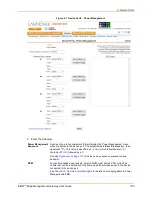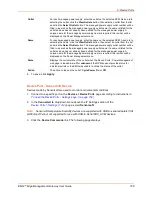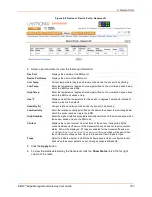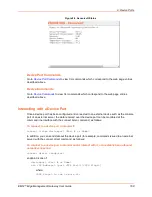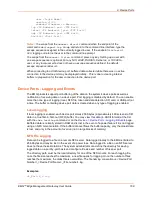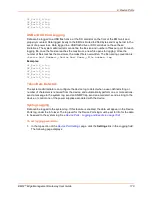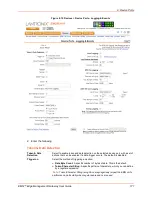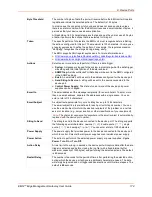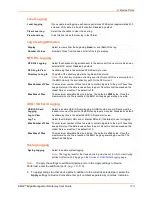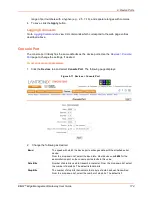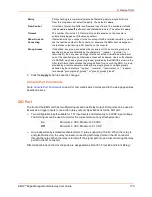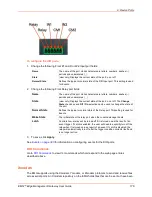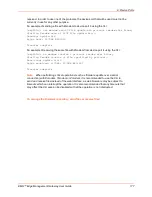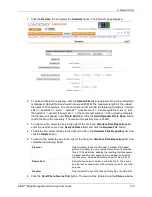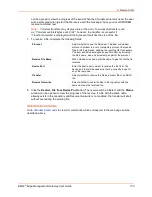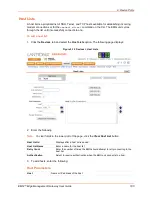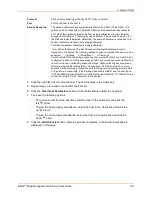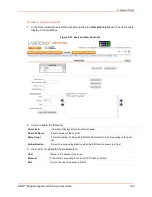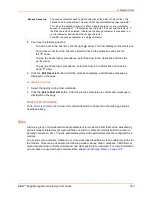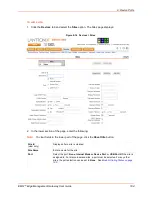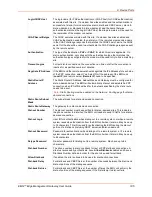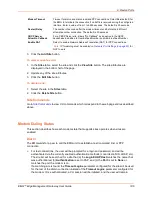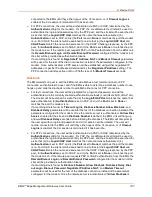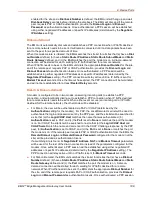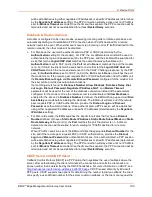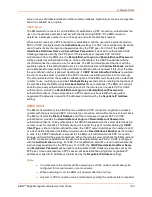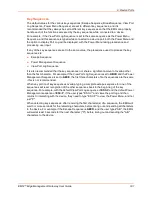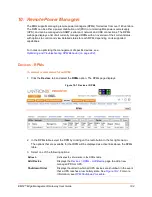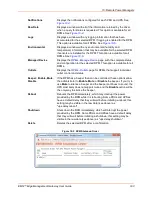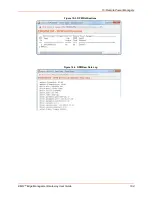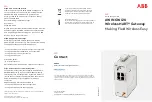
9: Device Ports
EMG™ Edge Management Gateway User Guide
179
can be opened to view the progress of the send. When the Xmodem protocol is used, the user
will be prompted when to start the file receive with the message, “Give your local XMODEM
receive command now.”
Note:
Ymodem transfers may display a line at the end of a successful transfer such
as, “Ymodem sectors/kbytes sent: 0/ 0k”, however, the transfer is successful if
“Transfer complete” is displayed and the bytes sent matches the size of the file.
7. To receive a file, complete the following fields:
8. Click the
Receive File from Device Port
button. The receive will be initiated, and the
Status
window can be opened to view the progress of the receive. If a file with the same name
already exists in the repository and Receive Overwrite is not enabled, the transfer will abort
without overwriting the existing file.
Xmodem Commands
Go to
to view CLI commands which correspond to the web page entries
described above.
Protocol
Select whether to use the Xmodem, Ymodem or Zmodem
protocol. Xmodem is a very rudimentary protocol that sends
files in 128 byte blocks, padding the resulting file if necessary.
Ymodem and Zmodem expand upon Xmodem by including
the file’s name, size and timestamp as part of the protocol.
Receive File Name
When Xmodem is used, enter the name to give the file that is
received.
Device Port
Enter the device port number to receive the file from. The
device port that will be used must not be currently in use for
any other purpose.
Transfer
Select whether to receive the file as a binary file or an ASCII
file.
Receive Overwrite
Select whether to overwrite files in the repository with the
same name as the received file.

